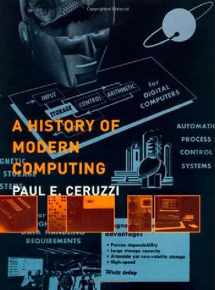
A History of Modern Computing (History of Computing)
Book details
Summary
Description
This engaging history covers modern computing from the development of the first electronic digital computer through the advent of the World Wide Web. The author concentrates on four key moments of transition: the transformation of the computer in the late 1940s from a specialized scientific instrument to a commercial product; the emergence of small systems in the late 1960s; the beginnings of personal computing in the 1970s; and the spread of networking after 1985.
Within this chronological narrative, the book traces several overlapping threads: the evolution of the computer's internal design; the effect of economic trends and the Cold War; the long-term role of IBM as a player and as a target for upstart entrepreneurs; the growth of software from a hidden element to a major character in the story of computing; and the recurring issue of the place of information and computing in a democratic society. The focus is on the United States (though Europe and Japan enter the story at crucial points), on computing per se rather than on applications such as artificial intelligence, and on systems that were sold commercially and installed in quantities. The author balances stories of individuals with those of institutions and emphasizes those factors that conspired to bring about the decisive shifts in the story.


We would LOVE it if you could help us and other readers by reviewing the book
Book review



